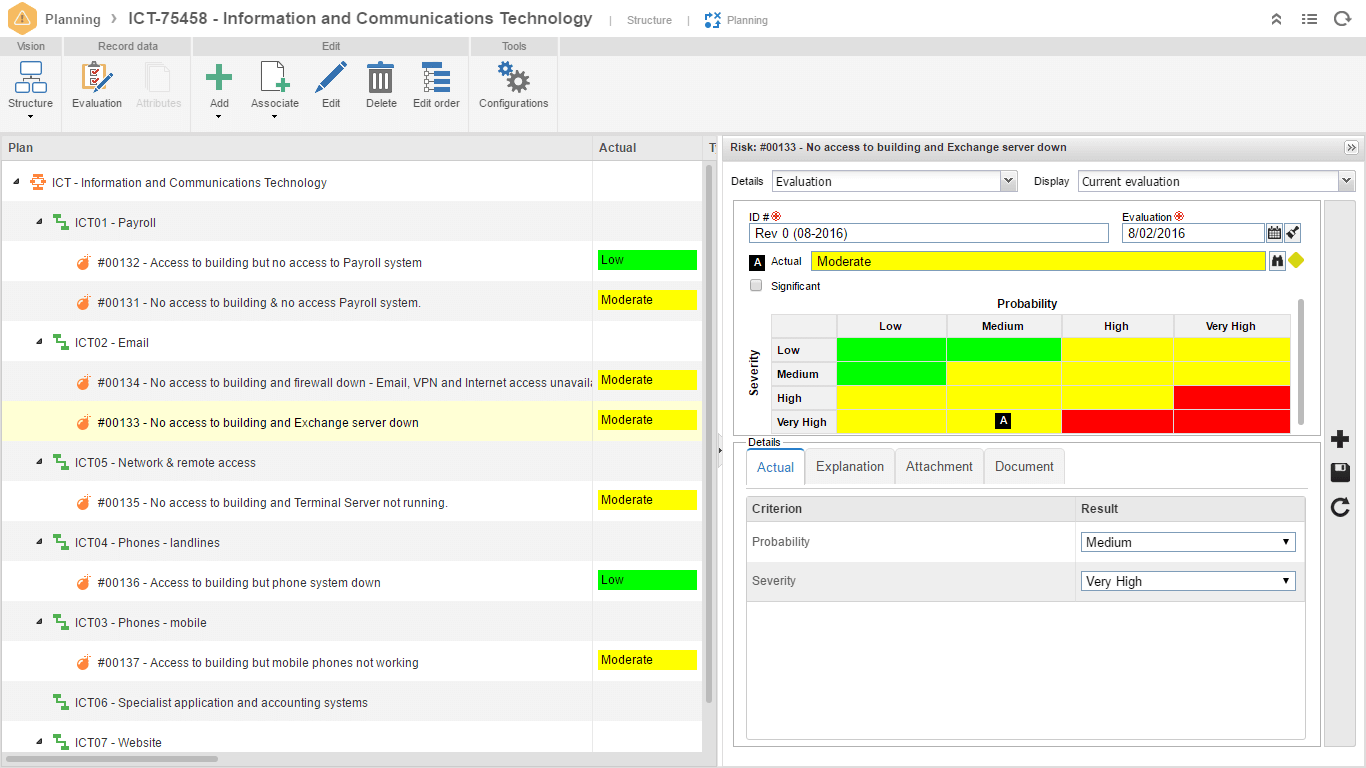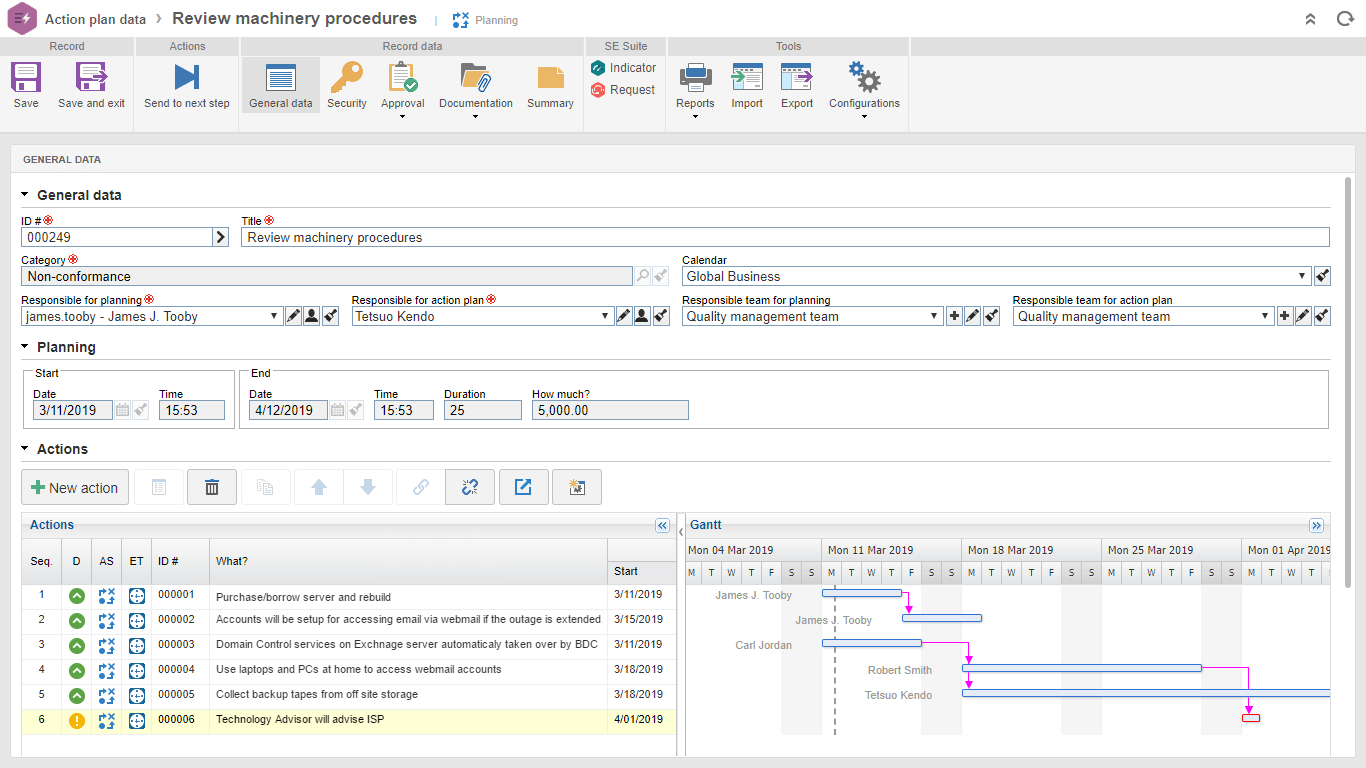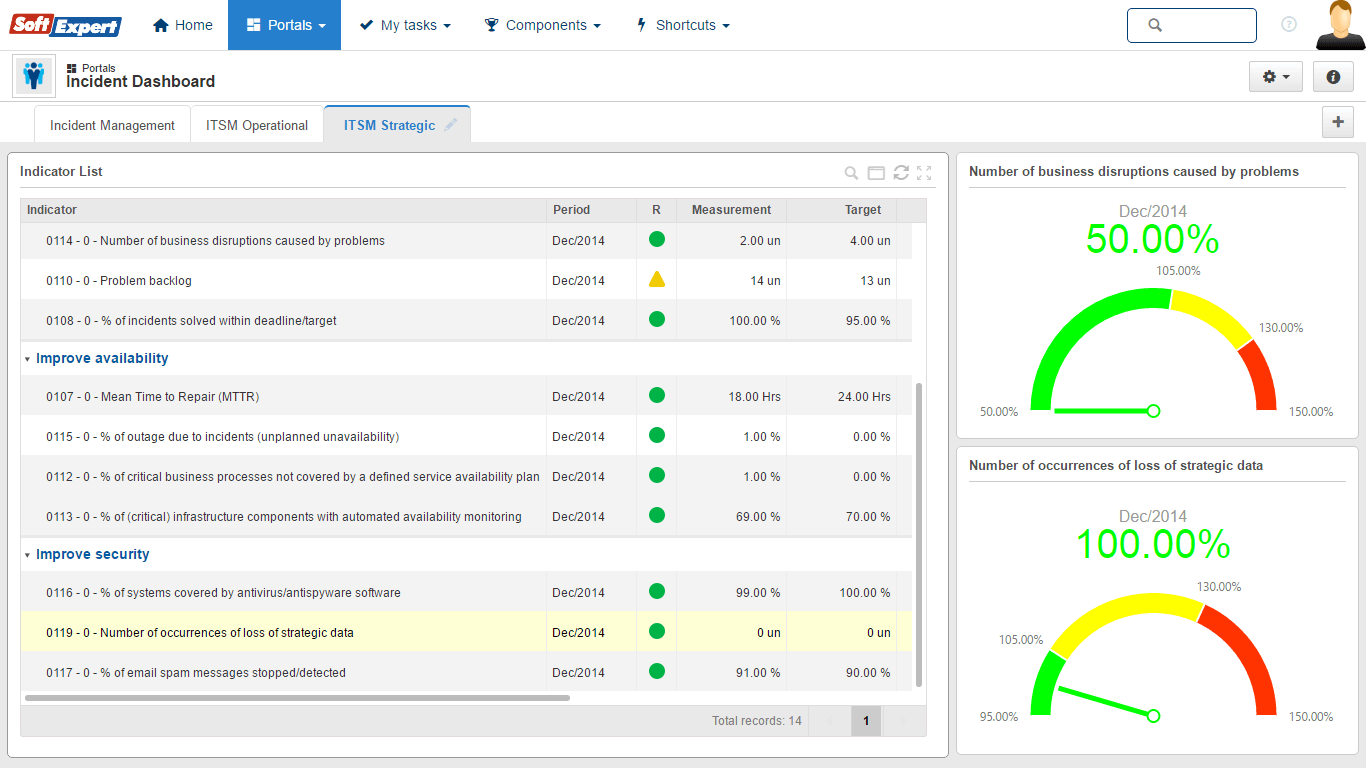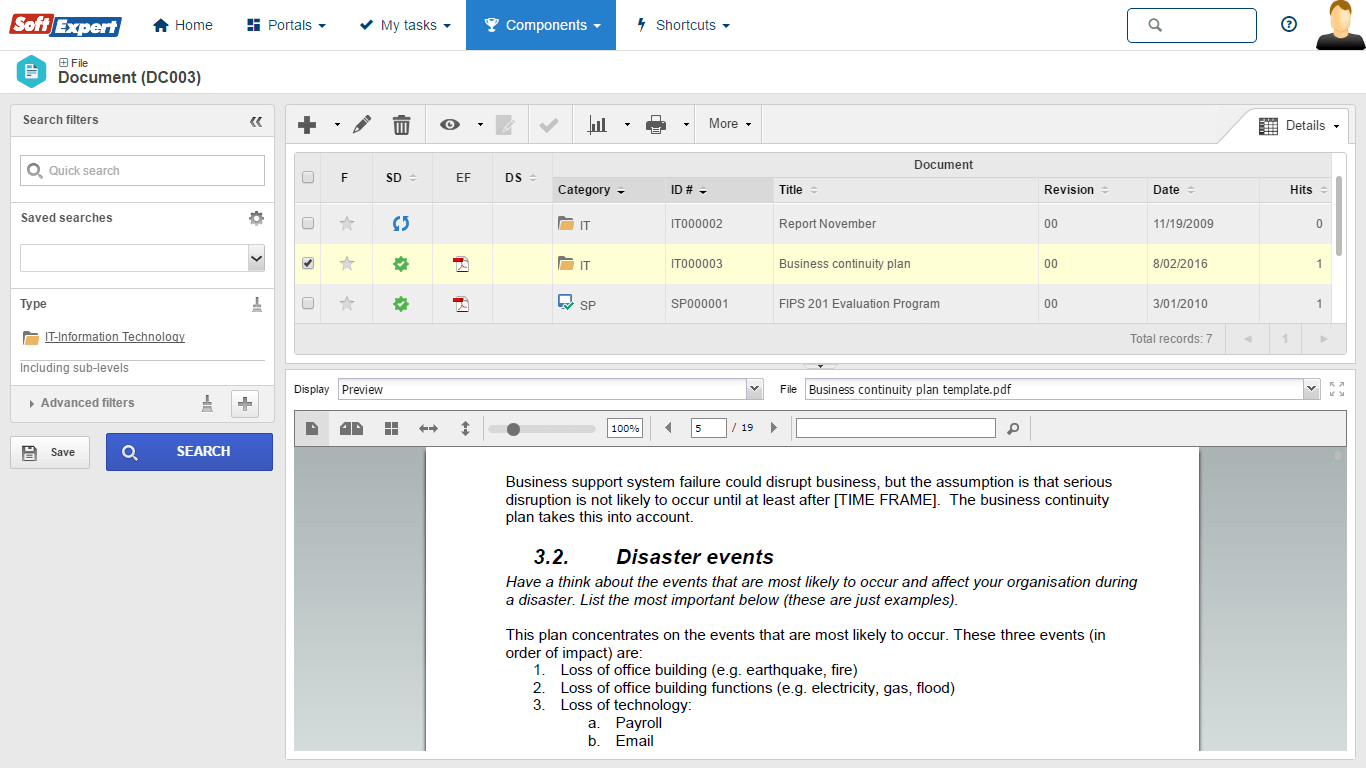ISO 22301
El Reto
Una organización precisa tomar precauciones y estar preparada para garantizar la continuidad de su negocio independiente de la naturaleza de los desafíos a ella impuestos. Implementar un sistema de gestión de continuidad de negocios (GCN) y planes de recuperación de desastres capacita a las organizaciones a lidiar con cualquier situación. El proceso de continuidad de negocios ayuda a crear un entendimiento claro de cómo la empresa opera y de dónde las fallas pueden ocurrir, mejorando los procesos de negocio.
La norma internacional ISO 22301 especifica los requisitos para planificar, establecer, implementar, operar, monitorizar, revisar, mantener y mejorar continuamente un sistema de gestión documentado que tiene como objetivo proteger, reducir la probabilidad de ocurrencia, responder, y recuperarse de incidentes disruptivos, cuando ellos acontezcan.
ISO 22301 Solution
SoftExpert ofrece la solución de software más amplia y avanzada para la gestión de continuidad de negocios y que atiende las necesidades de los más rigurosos reglamentos globales. SoftExpert Excellence Suite ayuda a las empresas a adherir a la ISO 22301, reduciendo los costos de conformidad, maximizando el éxito, aumentando la productividad y reduciendo los riesgos.
La solución de SoftExpert permite que las organizaciones atiendan los requisitos de la ISO 22301 de forma fácil. La misma ayuda en la gestión de la estrategia, amenazas, riesgos, controles, planes de acción, entrenamientos, incidentes, indicadores de desempeño, procesos, entre otros. Con eso, impulsa la eficiencia organizacional, reduce el retrabajo y el desperdicio.
Con recursos de colaboración en línea, la organización y sus gestores pueden comunicar y ser actualizados sobre iniciativas de conformidad, abarcando a más usuarios, equipos, oficinas y unidades de negocio, a través de un abordaje sistemático y unificado para alcanzar la excelencia en la gestión de continuidad de negocios.
Screenshots

Gestión de riesgos

Planes de continuidad

Monitorización estratégica

Gestión de documentos
Principales Beneficios
Identify and manage current and future threats to the business.
Adopta un abordaje proactivo para minimizar el impacto de los incidentes.
Mantiene las funciones críticas activas y funcionales durante los momentos de falla.
Minimiza el tiempo de parada durante los incidentes y mejora el tiempo de recuperación.
Demuestra resistencia a los clientes y proveedores.
Reduce la frecuencia y el impacto de los incidentes disruptivos.
Promueve confianza de que los planes de recuperación son eficaces.
Mejora la reputación en el mercado.
Reduce los costos al reducir el impacto de los incidentes.
Define plazos aceptables para la retomada de las actividades de la empresa y de sus proveedores en caso de falla.